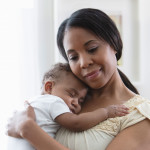HIV-positive children exposed to single-dose Viramune (nevirapine) at birth are more likely to have virologic success later with a Kaletra (lopinavir/ritonavir)–based regimen than a Viramune-based regimen. These data were presented at the Fifth International AIDS Society (IAS) Conference on HIV Pathogenesis, Treatment and Prevention in Cape Town.
Viramune is one of the most widely used, and lease expensive, first-line HIV treatment options in the developing world, but whether to use it in HIV-positive children exposed to a single-dose of the drug at birth has been a question that has remained largely unanswered. Because of the fact that single-dose Viramune almost always leads to the development of at least some Viramune-resistant strains of virus, many have been skeptical that a subsequent treatment regimen that included Viramune would be able to control virus.
One study presented at this IAS meeting suggested that a Viramune regimen was equal to a Kaletra regimen in such children. Data from a different study, the IMPAACT P1060 study, reached the opposite conclusion.
As part of the IMPAACT study, Lynne Mofenson, MD, from the National Institutes of Health in Bethesda, Maryland, and her colleagues compared Viramune with Kaletra (both were combined with Retrovir [zidovudine] and Epivir [lamivudine]) in two groups of children. One had been exposed to Viramune at birth and the other had not. The children were started on these antiretroviral regimens—their first—between the ages of 6 and 36 months. When data from the first group, who had been exposed to Viramune, were reviewed by a data safety monitoring board (DSMB) part way through enrollment, they found that virologic failure was more than three times as likely in the children receiving the regimen including Viramune. Though the study had only recruited 153 of a planned 288 children, this arm of the study was stopped early due to these results.
Advertisement
Advertisement
Advertisement






Comments
Comments